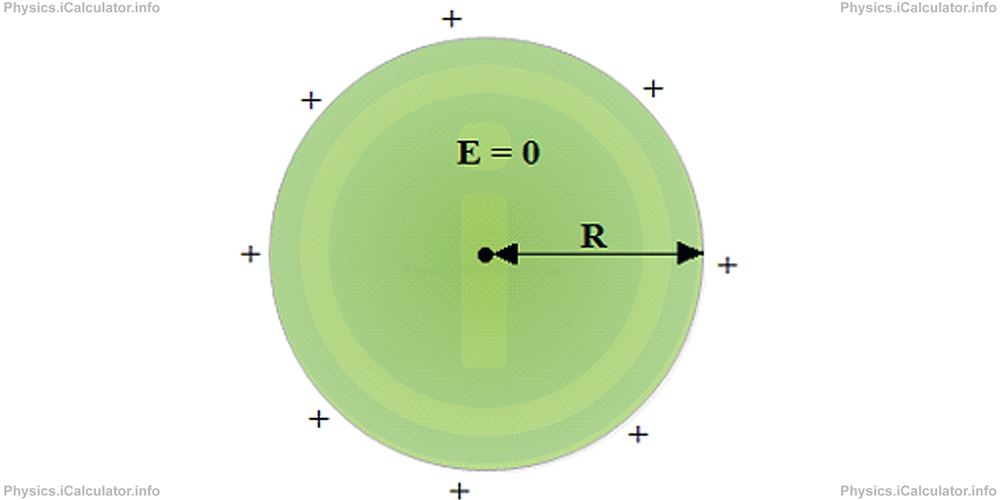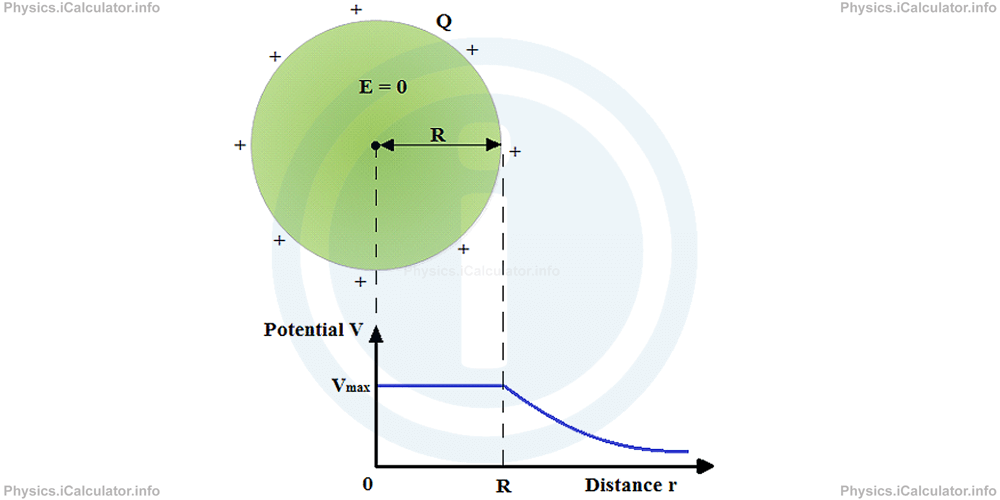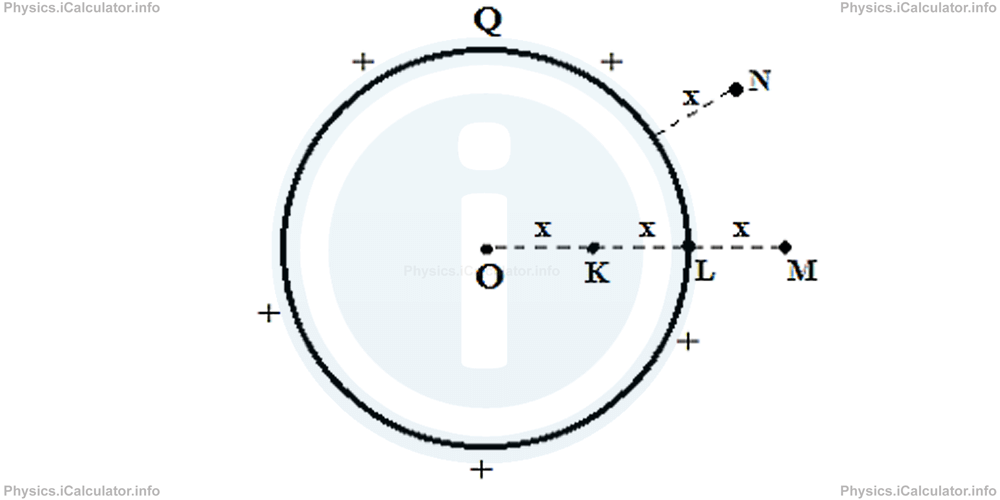Menu
Physics Lesson 14.5.7 - Potential of a Charged Sphere
Please provide a rating, it takes seconds and helps us to keep this resource free for all to use
Welcome to our Physics lesson on Potential of a Charged Sphere, this is the seventh lesson of our suite of physics lessons covering the topic of Electric Potential, you can find links to the other lessons within this tutorial and access additional physics learning resources below this lesson.
Potential of a Charged Sphere
As explained in the previous tutorials, the electric field inside a charged sphere is zero because all charges are distributed uniformly on the surface only. This is because a sphere can naturally have only one type of extra charge, and they repel each other as far as possible as explained earlier.

Since E = ΔV / d, the potential difference inside the sphere is zero for any d as well. This means the potential inside the sphere is the same everywhere; it is equal to the potential on the outer surface, i.e.
where Q is the amount of charge the sphere carries and R is its radius.
The potential for points outside the sphere is
where r > R is the distance from the centre of sphere to the given point. In this case, the charge contained by the sphere behaves as if it was entirely concentrated at centre of the sphere. With the increase of distance from centre, the potential decreases, as electric potential and distance vary inversely.
Below, a graph expressing the relationship between electric potential and distance from the centre for a charged sphere is shown.

Example 6
A metal sphere has a charge of Q. What is the relationship between the electric potentials at point K, L, M and N shown in the figure?

Solution 6
The electric potential at any point inside the sphere and on its surface is
Here, R = 2x. Therefore, the potential at points K and L is
The points M and N are equipotential as rM = rN = 3x = 3R/2. Hence,
Therefore, we have
Or
and
You have reached the end of Physics lesson 14.5.7 Potential of a Charged Sphere. There are 8 lessons in this physics tutorial covering Electric Potential, you can access all the lessons from this tutorial below.
More Electric Potential Lessons and Learning Resources
Whats next?
Enjoy the "Potential of a Charged Sphere" physics lesson? People who liked the "Electric Potential lesson found the following resources useful:
- Charged Sphere Feedback. Helps other - Leave a rating for this charged sphere (see below)
- Electrostatics Physics tutorial: Electric Potential. Read the Electric Potential physics tutorial and build your physics knowledge of Electrostatics
- Electrostatics Revision Notes: Electric Potential. Print the notes so you can revise the key points covered in the physics tutorial for Electric Potential
- Electrostatics Practice Questions: Electric Potential. Test and improve your knowledge of Electric Potential with example questins and answers
- Check your calculations for Electrostatics questions with our excellent Electrostatics calculators which contain full equations and calculations clearly displayed line by line. See the Electrostatics Calculators by iCalculator™ below.
- Continuing learning electrostatics - read our next physics tutorial: Electric Flux. Gauss Law
Help others Learning Physics just like you
Please provide a rating, it takes seconds and helps us to keep this resource free for all to use
We hope you found this Physics lesson "Electric Potential" useful. If you did it would be great if you could spare the time to rate this physics lesson (simply click on the number of stars that match your assessment of this physics learning aide) and/or share on social media, this helps us identify popular tutorials and calculators and expand our free learning resources to support our users around the world have free access to expand their knowledge of physics and other disciplines.